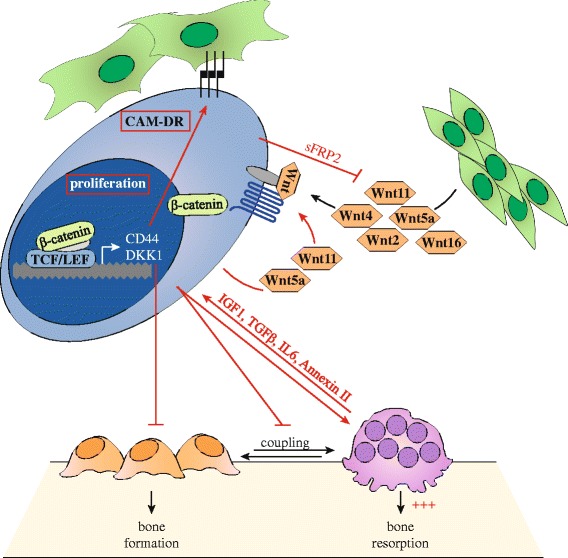Fig. 4.

The Wnt signaling pathway is a central player in MM. MM cells have an active intrinsic Wnt pathway. This can be stimulated by Wnt ligands produced by BM cells including MSC, or in an autocrine fashion via at least Wnt5a and Wnt11. Canonical Wnt pathway activation via Fzd1, Fzd6, or Fzd7 leads to active LEF/TCF mediated transcription of Wnt target genes that promote tumor growth. The transcribed Wnt antagonist Dkk1 is secreted into the BM microenvironment and inhibits osteoblast proliferation, differentiation and survival. Combined with stimulation of osteoclast activity, this results in disruption of bone homeostasis and increased osteolytic bone resorption. The growth factors IGF-1 and TGF-β that are released from the bone matrix, together with osteoclast-secreted factors IL-6 and Annexin II, further stimulate MM cells. Expression of the Wnt target gene CD44, together with stimulation of the non-canonical Wnt pathways, stimulate adhesive properties of MM cells to BM stromal cells. This induces cell adhesion-mediated resistance of MM cells to conventional drug therapies
